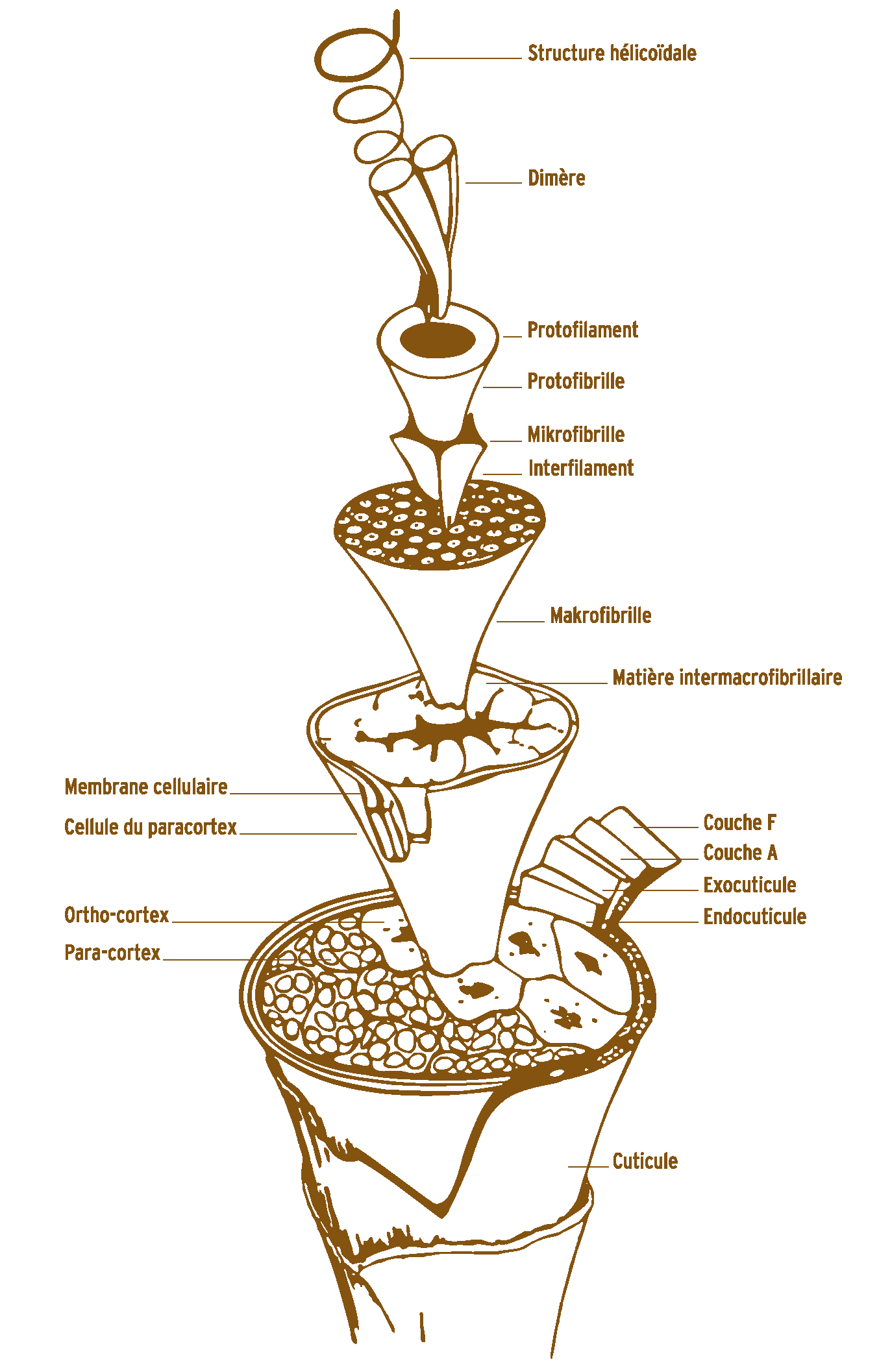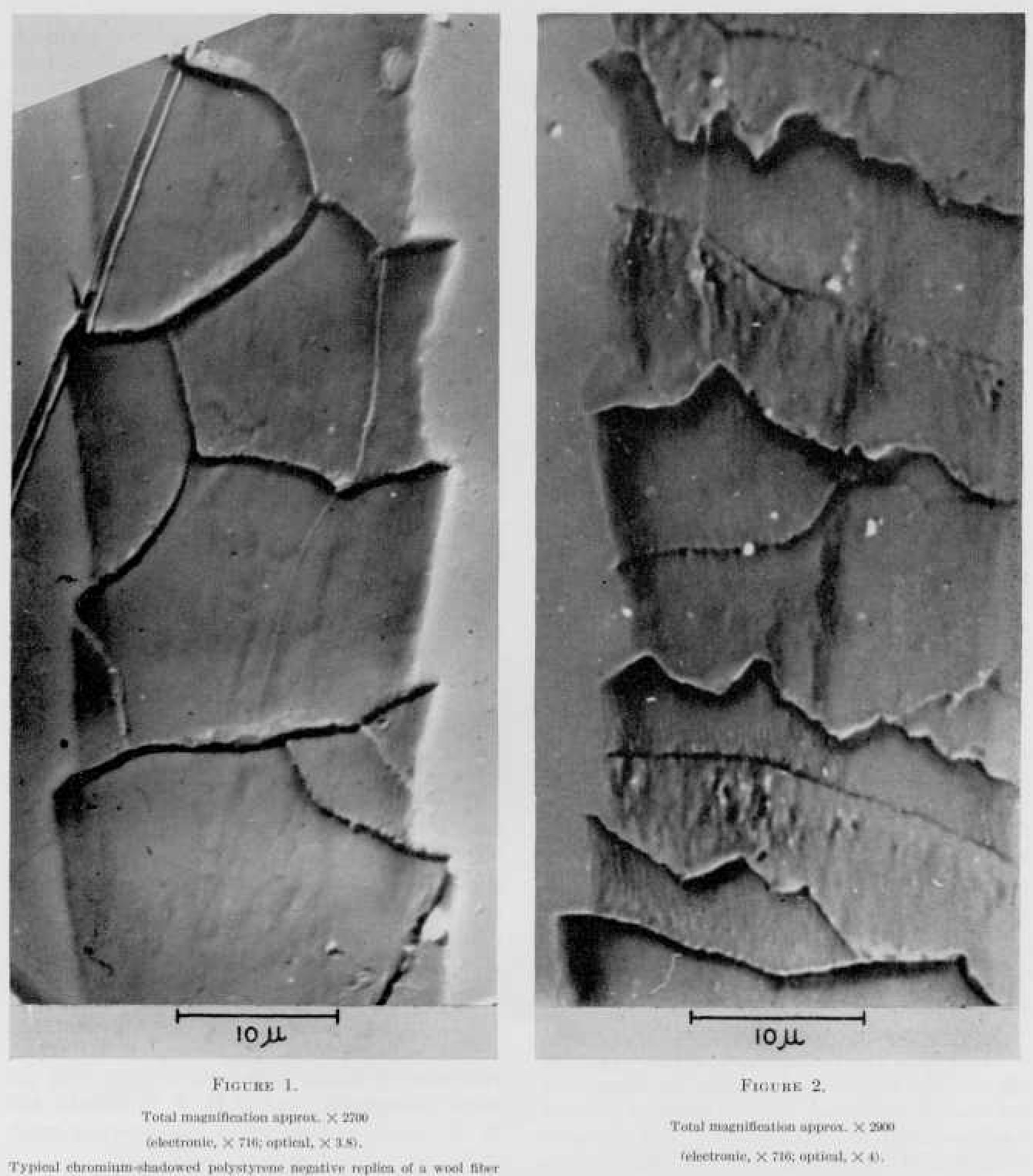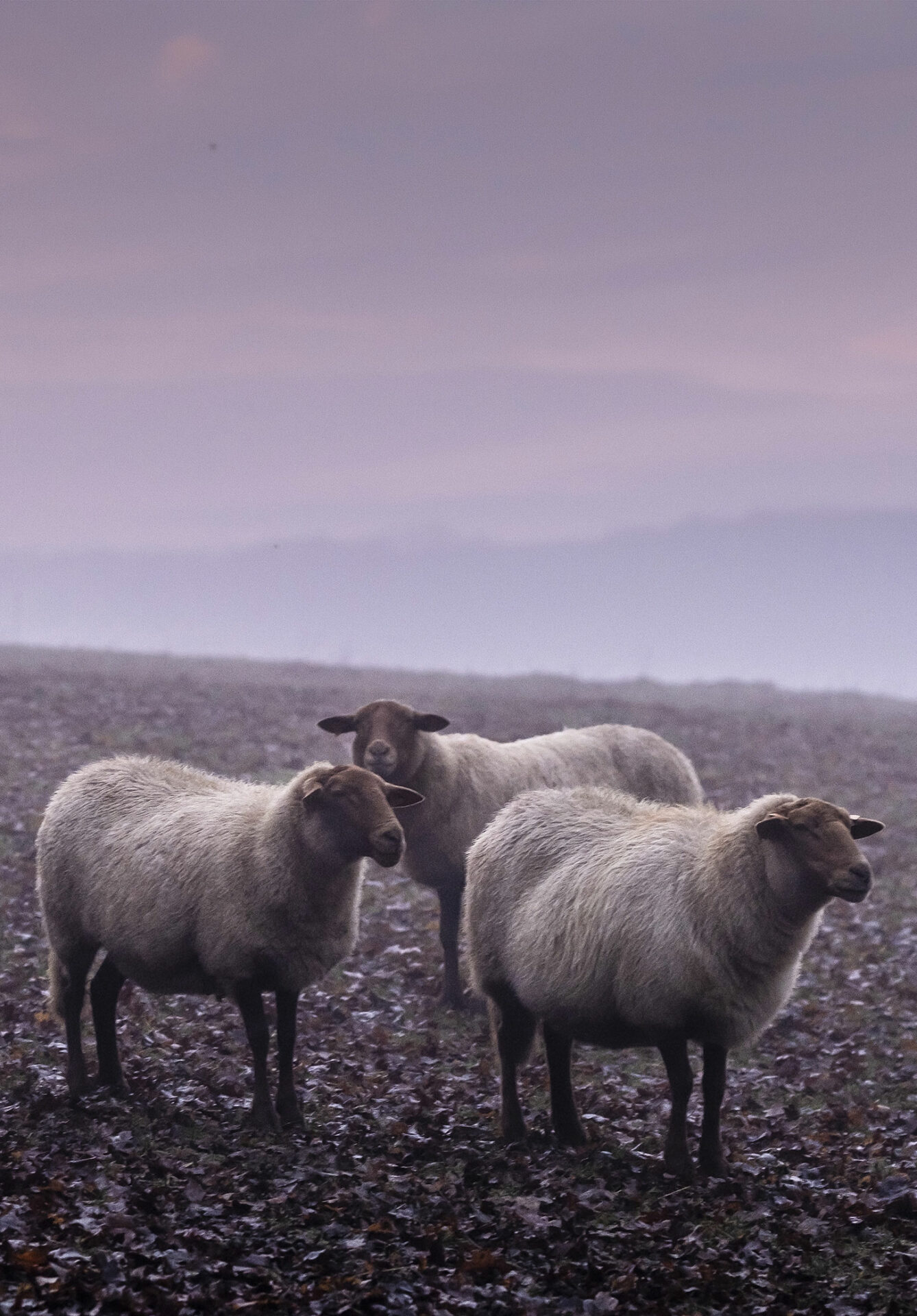Wool fibres
Nature has gifted us a unique renewable resource that is essential today.
Wool fibres are protein-based fibres that renew every year and come from local agriculture.
• Wool gets its elasticity and resistance from 24 (known) amino acids, which are bound in the form of a chain of macromolecules.
• The stabilising effect of this bond is so powerful that the cells still stick together despite a 50% elongation of the fibres.
• The layer of scales on the wool fibres is impermeable – however, wool fibres compensate for humidity and can absorb up to 33% of their dry weight in moisture, in the form of water vapour, and release it without being ‘wet’.
• Wool has an LOI (Limiting Oxygen Index) of 25.2. Its auto-ignition temperature is 580°C.
• Since wool is a natural material, it is not allergenic and has no negative impact on health (no fibres in the lungs).
• Sheep’s wool is versatile and naturally represents a raw material that is predominant in our products.


As a result, each wool has its own properties and can be enhanced based on these. Therefore, there is no such thing as good wool or bad wool; it varies, and this is part of the richness of this natural and renewable resource. It regrows on the back of sheep every year and can have many different uses in our day-to-day lives. So, it is up to us to (re)discover this material!
How do you use wool?


Downloads
Technical sheets
Installation instructions
Certifications
Images
Follow us
© Woolconcept. All Rights Reserved.
Downloads
Technical sheets
Installation instructions
Certifications
Images
Follow us
© Woolconcept. All Rights Reserved.